Uriel Tuttle House
3925 Torringford Street
I wish I had more to tell you regarding the Tuttle houses in the Torringford section of Torrington along Torringford Road. I’ve got nothing other than they are both very large Colonial houses, Uriel’s appearing to have been updated a bit more than Isiah’s, which is about a quarter of a mile north along the same road.
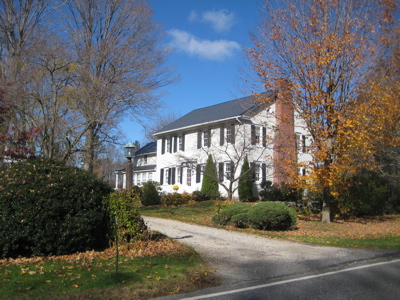
The above paragraph held until early February 2011 when the CT Freedom Trail folks released their updated website with new information! Which is where we learn the following:
Uriel Tuttle (1779-1849) built this house in 1802 and it has been widely regarded as a stop on the Underground Railroad. Tuttle was the president of the Litchfield County Anti-Slavery Society and the Connecticut Anti-Slavery Society. An excerpt from a letter written upon the death of Tuttle attests to his dedication to the abolitionist cause:
His efforts and undying zeal in the cause of emancipation are too well known to the public in this state to need a delineation… His house was literally a place of refuge for the panting fugitive, and his purse and team were often employed to help him forward to a place of safety.
This home is privately owned and not open to the public, but I still took a picture of it.
There aren’t enough Uriel’s in the world these days.
![]()
Isiah Tuttle House
4040 Torringford Street
I think Isiah was Uriel’s dad back in the 1700’s. It’s sort of impossible to figure out though, because the Tuttle’s lives in the area for a couple centuries and they kept naming their kids the same names over and over. I guess, because, Uriel and Isiah are such cool names.
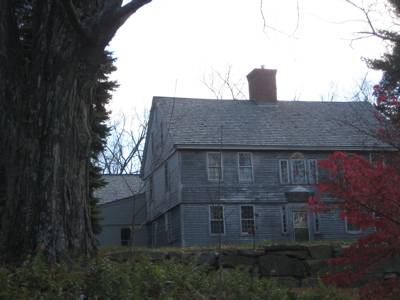
Isiah’s old house looks decidedly older than Uriel’s, but it also looks quite a bit cooler in my opinion. Maybe it’s just the red bush framing the shot (Hoang snapped this one).
Major Isaiah Tuttle (1752-1831) was an important early settler of the northeast corner of Torrington. This home, built in 1803, operated as a tavern for many years and may have served as an Underground Railroad station. Although the history is not as well documented as that of Uriel’s home at 3925 Torringford Street, this association lends to the likelihood that the Isaiah Tuttle house was also involved in the Underground Railroad. The home is privately owned and not open to the public.
![]()
John Brown Birthplace
John Brown Road
John Brown. JohnBrown. Do you think his crew called him “JohnBrown” like I call my friend Ed Hill “EdHill.” Single-syllable first and last names of a certain cadence almost dictate doing it. JohnBrown. (Hoang and I actually know a John Brown and yes, he is most certainly known as “JonBrown.”)
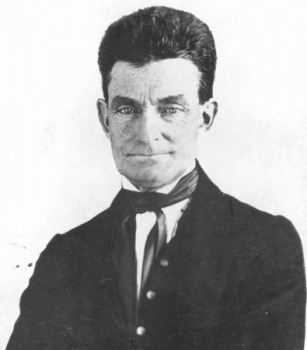
Of course, our friend JonBrown is not exactly historically important enough to warrant a page on CTMQ.
John Brown is one of those iconic guys in American history that almost everyone with a high school degree has at least heard of. Of course, he’s far more associated with Kansas and West Virginia than with Connecticut, but we’re used to that – Mark Twain Missouri what? Samuel Colt “the West” where? Glenn Beck Nuthouse who? In Brown’s case, however, his association with Connecticut really wasn’t that strong.

He was pretty much just born here. In the middle of nowhere in northern Torrington, almost in Goshen for crying out loud, along a road that probably hasn’t changed too much from his birth year of 1800. As Hoang and I poked around the spot, which now only contains a stone monument and some foundation bits, I did feel a sense of importance. John Brown was perhaps a bit of a nut (with the “mission from God stuff and voices in his head), but he was the a most noble nut.
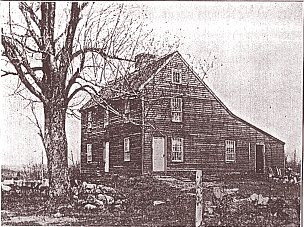
From the Torrington Historical Society’s page on Brown’s birthplace:
Today, there is little visible evidence of the house where the fiery abolitionist, John Brown was born. Nevertheless, the site remains a compelling place to visit and contemplate events in the life of John Brown, whose actions have so profoundly shaped the history of America. The farm house was built in 1785 and was purchased by Owen Brown, John Brown’s father, in 1799. John Brown was born there on May 9, 1800.
The birthplace was restored to its 18th century appearance in 1901 and became one of the first house museums in Connecticut, attracting visitors from Connecticut, the nation, and foreign lands. Unfortunately, a chimney fire destroyed the home in 1918.
I find that fascinating.
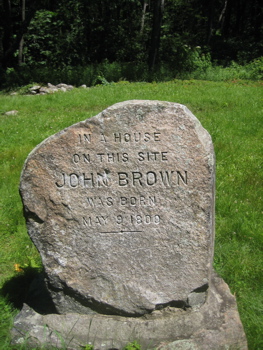
Since 1918, the site has been maintained as a clearing in the forest. In 1932 a granite monument was erected. Further historical recognition was secured in 1997 when the birthplace of John Brown became a Connecticut African-American Freedom Trail Site. In the year 2000, the Torrington Historical Society acquired the property in merger with the John Brown Association. Plans are now being formulated to improve visitor services and to construct interpretive trails on the property.
I can report that in 2020, those interpretive trails have been cleared!
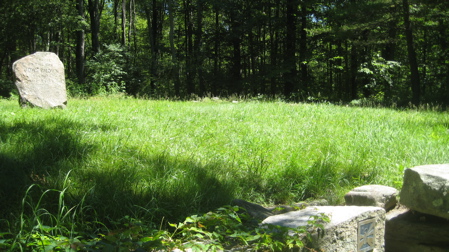
Here’s some more info on Brown, again from the fine folks at the THS:
Of all the sons and daughters ever born on Connecticut soil, perhaps no one has exerted a more profound impact on the nation’s history than John Brown. Born high atop the scenic hills of Torrington, the future abolitionist spent the first years of his life imbibing the stern rigors of his father’s old-line Calvinism. Though he soon moved west and for years was plagued by a series of disastrous business ventures, he never abandoned his faith. Indeed, emerging from the 2nd Great Awakening of the early decades of the 19th century as an evangelical Protestant, he eventually dedicated his life to eradicating what he deemed to be American’s greatest sin – the enslavement of human beings.
Enlisting in the burgeoning abolitionist crusade of the 1830s, Brown initially hoped that slave owners might see the error of their ways through “moral suasion.” Still, like many other abolitionists, he warned that if southerners failed to emancipate their slaves voluntarily, an angry God would reap His revenge against the nation via a bloody civil war.
When his plans to distribute guns to slaves to launch a guerrilla war failed, he was captured, tried, convicted of treason, and sentenced to death. Interestingly, Brown seemed to relish his notoriety and perhaps understood that his martyrdom might well bring the nation closer to a civil war that could end in the demise of slavery. At any rate, what is certain is that Brown’s daring actions sent shock waves throughout the country. In the North, he was hailed by many as a hero and Ralph Waldo Emerson predicted that Brown “would make the gallows as glorious as the cross.” In the South, however, he was viewed by most as a typical abolitionist who wanted nothing less than a major slave insurrection. In all, John Brown was indeed “the meteor” who succeeded in polarizing emotions and elevating southern anxieties into a “crisis of fear” that set the stage for the impending Civil War.
Good stuff, but they left out the best part: His righteous murders in Kansas!

From a bio of Brown:
By the time he was 50, Brown was entranced by visions of slave uprisings, during which racists paid horribly for their sins, and he came to regard himself as commissioned by God to make that vision a reality. In Aug. 1855 he followed 5 of his sons to Kansas to help make the state a haven for anti-slavery settlers. The following year, his hostility toward slave-staters exploded after they burned and pillaged the free-state community of Lawrence. Having organized a militia unit within his Osawatomie River colony, Brown led it on a mission of revenge. On the evening of 23 May 1856, he and 6 followers, including 4 of his sons, visited the homes of pro-slavery men along Pottawatomie Creek, dragged their unarmed inhabitants into the night, and hacked them to death with long-edged swords.
Come on Torrington Historical Society! Don’t ignore the his swashbuckling antics!
Anyway, despite his penchant for supernaturalism and murder (the two are so often intertwined), John Brown was a very important guy. I’m glad that his birthplace plot of land is now protected and will serve future generations.
One last note, from the actual Freedom Trail website: “The image of Brown’s house is incorporated in the City of Torrington’s seal. Pikes used by John Brown and his men in the Harper’s Ferry raid were made by the Collins Company, located in the Collinsville section of Canton. The Canton Historical Museum has one of these pikes on display.”
Three facts I did not know until now.
![]()
CTMQ’s Underground Railroad Trail page
CTMQ’s Freedom Trail page

 Denis Frauenhofer says
Denis Frauenhofer says
December 19, 2022 at 2:09 amAlthough John Brown left Torrington at age three he did have a strong connection to the area later in life, making numerous trips to conduct business.
Thanks for your article.
 king kong wing wong says
king kong wing wong says
March 7, 2025 at 2:34 pmneed more facts